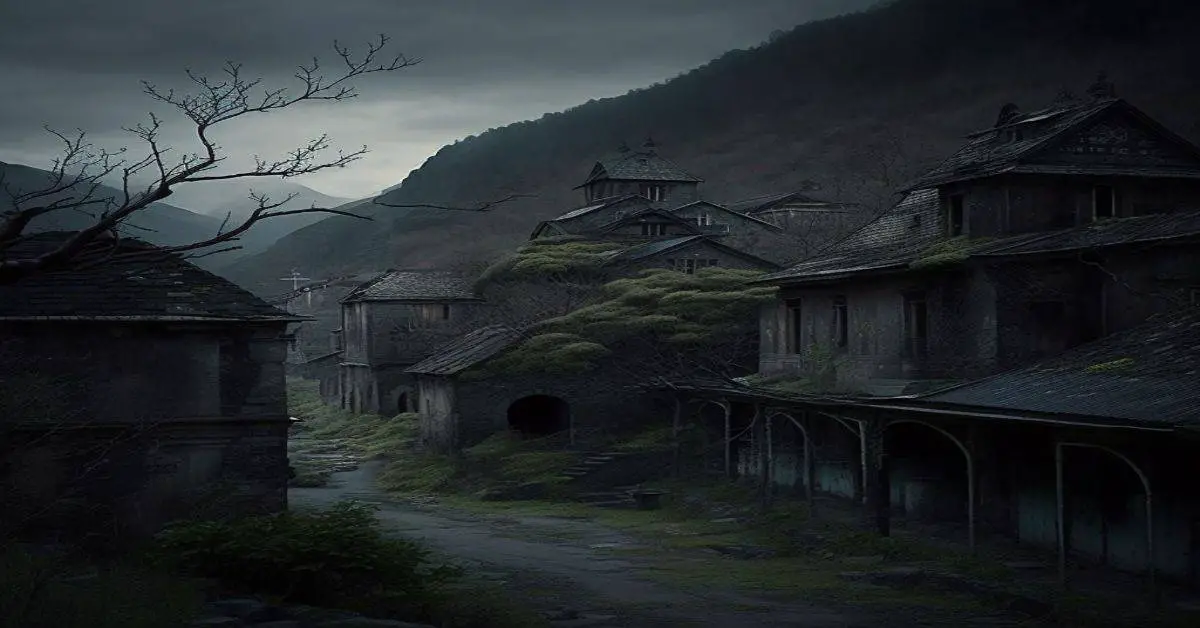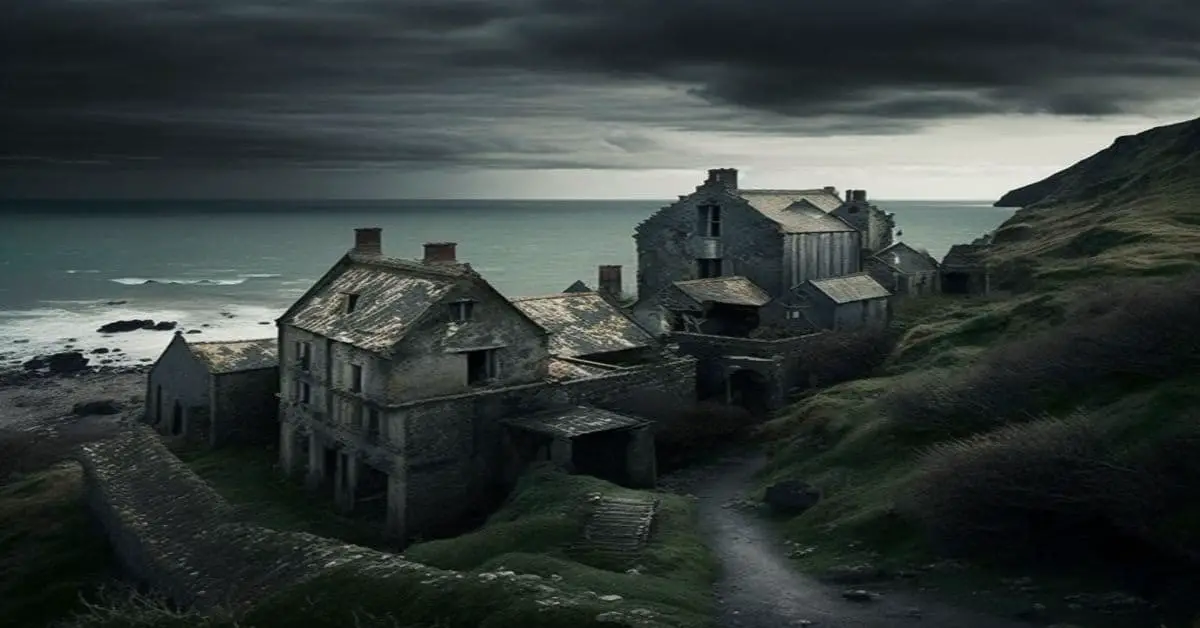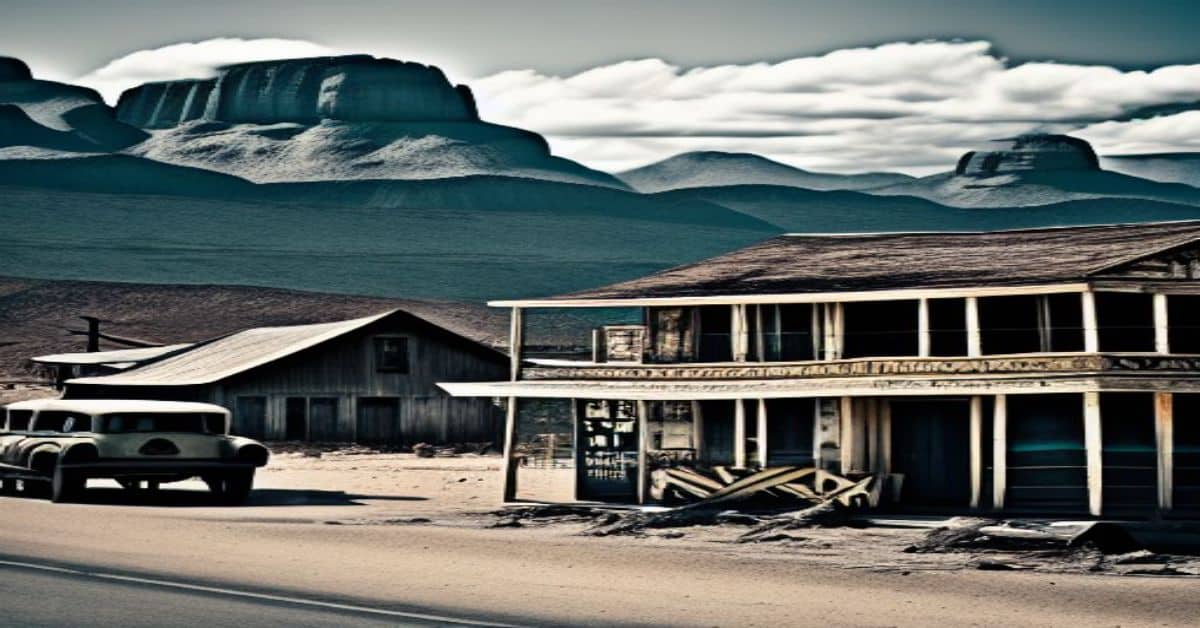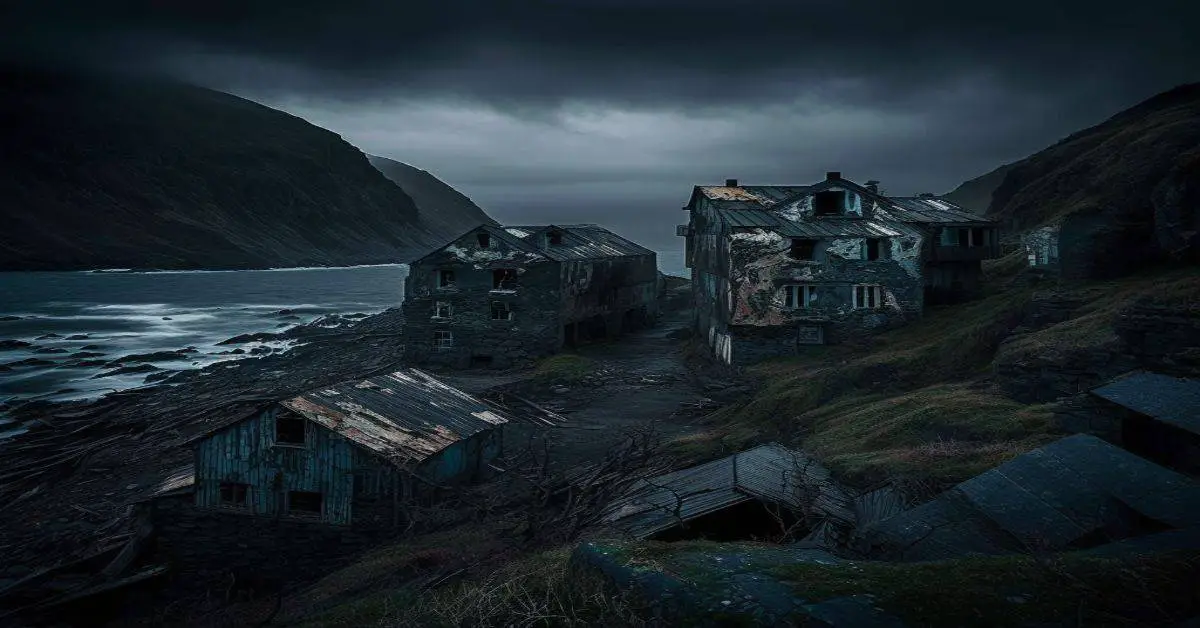The towns of New Mexico are a study in contrast. Some, like Albuquerque or Santa Fe, are shining examples. In contrast, others remained hidden from sight due to their remote location and inhospitable climate, making them difficult for settlers early on because they required more resources than most areas provided at that time.
However, some would say this was beneficial since it restricted competition between places trying to establish themselves as hubs within transportation networks.
The names of fabled mines whisper on the wind, remnants from days that used to be. These towns witnessed some of America’s most romantic and rapacious history; they disintegrate into oblivion with their shells still intact – these phantom images against an endless sky-like specters longing for revenge or perhaps just justice.
If you listen very closely indeed-for all our histories are bound up together–you can hear them called out by whichever name has been lost over time: Bridal-Chamber.
You can read the names of legendary people written in the dust: Johnny Ringo, Russian, Bill, Toppy Johnson, Roy Bean, Butch Cassidy, Madame Varnish, Blackjack Ketchum, Mangas Coloradas, Billy the Kid, James Cooney.
The people of this region have a unique way about them that cannot be matched by any other place I’ve seen. They’re born with an innate sense of where they want to live, and when you see their eyes light up in response to your mention or question – it’s enough reason alone not only why these towns deserve attention from visitors but also protection against those who would damage such precious history for future generations as well.
One thing is sure: even if there aren’t many inhabitants anymore due to either demographic change or death-both private property owners should consider protecting what remains.
Organ, New Mexico
Organ, California, is a picturesque town with an exciting history that dates back to 1883. The once-small mining camp became an official community of Organ when it was founded in the late 1840s and has been active ever since then – even during times when there wasn’t much population around due to their abundance from previous decades or centuries.
By 1900, things changed drastically; at this point, only one saloon remained (which closed shortly after), and seven churches were open for business, including St Anthony’s Catholic Church on Main Street which still stands today.
Hagan, New Mexico
In 1902, The New Mexico Fuel and Iron Company were established to develop coal mines in the local area. They named their site Hagan after an official with AT&SF Railroad, who helped encourage its extension into town for more development opportunities like what we see now!
Initial work on this spur began back then but soon stalled within months due only some paperwork issues that needed to be resolved before construction could resume, thus leading up until 1908, when it stopped completely – leaving 60+ residents without jobs or prospects during those days when there wasn’t enough population density yet anyways.
Madrid, New Mexico
Madrid is a unique example of resurrection. In the 1920s and 30s, it was as famous for its Christmas lights display about coal-filled days gone by when people would travel from all around Europe so that they could see this town’s glamorous lifestyle with no less than ten thousand light fittings sparkle brightly against a starry sky on one single night.
Orogrande, New Mexico
Jarilla Junction was once a station on the El Paso and Northeastern Railroad. It wasn’t until 1905 when gold nuggets were discovered that gave rise to Orogrande, which became one of California’s most famous towns due in large part to this discovery!
For years after 1879, prospecting had taken place here, but with only small worthwhile finds, it wasn’t until ’05 when something much bigger happened; an entire mountain whole if it turned out to be minerals instead – Jarillette Junctions gets its name from this newest additions-arising right at their very doorstep. About 55 miles (55 km) of pipe were laid towards the Sacramento River.
Cerrillos, New Mexico
For many years, residents of Cerrillos have told stories about the rich mine that is said to be inside these hills. The legends speak the truth when they claim turquoise was found there and religious significance for Indian people who worked it before European settlers came along with their quest for wealth at any cost – even if this meant sacrificing nature itself!
While gold may not carry much weight among religions nowadays (unless you’re Hindu), hard rock miners from Colorado did find one major strike requiring all our attention here: a lode or deposits containing valuable minerals such as Golden+ Madrid’s.
White Oaks, New Mexico
White Oaks is a unique historical site in New Mexico. It’s not just an adobe town with typical Mexican architecture, but rather it has more cowboys and frontiersmen than anyone could have ever expected from its Cowboy/Frontier roots!
No Conquistadores were bringing the word of God to this native population; instead, they found themselves in quite an unfamiliar territory after discovering gold deep within these mountains–and things changed drastically for White Oakes as soon as shafts started coming out bearing down towards Mustangville below.
There seems little doubt that eastern influences will be seen here, too: lawyers seem like they would fit right at home among those who’ve been mining silver.
Lake Valley, New Mexico
Lake Valley’s town had several buildings, including one church and two boarding houses. The general store served as both post office for the area’s few residents who sent mail by foot or horseback every day while they worked their silver ore claim on weekends; it also stocked groceries like dried apples which were popular at that time because people couldn’t get enough canned goods during The Silver Panic Of 1893
The blacksmiths would come from miles around to ensure your ironware needs were met – mainly if you lived near where central Rails came together (like here).
Kelly, New Mexico
Kelly, New Mexico, is home to an old mining town that was once bustling with life. The name “Kelly” came from Patrick H Kelley, who held several claims in the area and by 1884 had established himself as leader of this small community which at one point consisted of only thirty people living on its own outside Santa Fe Springs (now known as Los Alamos).
He built banks, churches, saloons, and restaurant stores where they could buy groceries or get supplies needed for their farms while also having access to transport options, including trains and carloads. More importantly, though, we’re close enough if there ever seemed trouble brewing far away.
Chloride, New Mexico
Harry Pye was a speculating Englishman who made history by discovering silver in the canyon where Chloride is now located. He and two others claimed ownership of this land, later known as “Pleasant Valley.” However, they had no idea what potential wealth awaited them when their discovery turned out not just to be an ordinary deposit but one containing high-grade ore capable of producing revenue streams for decades.
Hillsboro, New Mexico
Hillsboro is a town in the hills of central Oregon, where Prospectors from all over have arrived to stake their claim. In just one year alone (1877), Hillsboros’s population grew by 300 as it became an important mining community, with adobe structures replacing tents and wooden buildings for those who couldn’t afford brick or stone stores anymore.
Today you can still find plenty of restaurants catering specifically to local cuisines, such as antelope steaks served up at The Cafe de Roland; authors drinking coffee near Publishing Company during Word Press convergence week.
Monticello, New Mexico
Monticello is a town that once thrived with more than 1,000 people. Nowadays, less than 100 residents are left in this once-bustling community. Much of what used to stand here has degenerated into ruins or been lost altogether due to its brief history, yet traumatic at different points throughout its lifespan.
Monticello no longer exists as we know it; instead, little remains except some houses along Highway 142, which were built by wealthier farmers back when these areas weren’t even considered “ranching” territory but rather Federal Land gave permission through Congress. As early censuses show us – before 1860
Hanover / Fierro, New Mexico
Hanover is a small town with many historical implications. The most significant of these happened during World War I when it became home to an Emerald Zinc mine that produced zinc for months. At the same time, Copper mining also took place here at one point in time before shutting down forever due struggling economy and low demand from consumers who were going through Great Depression-era budgets very closely every year, trying not expenditure more than necessary so as best conserve what little money had been earned even though there were plenty opportunities available especially if you knew someone high up within government circles because they could get parole board memberships.
Shakespeare, New Mexico
The town of Shakespeare was initially founded as a stop on the Butterfield Overland Stage line in 1854. In 1870, prospectors discovered samples of very rich silver ore and went hunting for financing to develop their new mines with some exciting success; they were eventually able to get enough interest from William Ralston, who became President Bank Of California after he helped finance several other companies before them including being one-half (alongside Stephen Girard) founder & predecessor at warning Philadelphia Mining Company which has been instrumental throughout history since then.
Golden, New Mexico
Once a quiet town on the southwest side of Colorado’s Ortiz Mountains, Golden was transformed into a bustling mining community when gold was discovered in 1825. Before long, people from all over were streaming into this frontier boomtown known as “The Mother Lode.” These early settlers founded two small camps: El Real de San Francisco and Placer del Tuerto, which grew up around what is now called “The City Of Mines.”
Elizabethtown, New Mexico
When the captain of Fort Union (north of Las Vegas) found that his daughter’s name had been passed down through generations, he decided to found a town in honor. He called it “E-Town” because there were so many towns like this one throughout America at one point or another during their history!
This small settlement on top of the podunk competed with bigger cities for resources. Eventually, it died out when mines closed around 1870 due mainly to the lack of foreigners moving into casino gambling, which became popular after 1900.
Dawson, New Mexico
Dawson, NM, was founded on the opening day of 1901 when The Phelps Dodge Company opened up a coal mine. In 1906 they bought out all rights to this property, and since then, development has increased tenfold!
Not only did these people build newspapers for their community but also hospitals and hotels with modern homes nearby too-they had everything you could need right there at your fingertips back in those days. But what’s even more exciting bout our little burg down under? Well, just how much history does everyone remember?
Loma Parda, New Mexico
When Fort Union moved into Loma Parda, it forever changed the town. Before then, considered an empty desert with only military personnel for the company- afterward, crowds of soldiers would flow in from all across America to enjoy what was left open and accessible: saloons, gambling halls & dance floors where women could be found were not afraid by their profession as well being there at night time when most everyone else had gone off duty or taken leave because they knew if any kind person offered them lodging, he wouldn’t ask questions about how that offering relief felt inside before giving out assistance.
Montoya, New Mexico
Montoya is a small town with an exciting past. It was founded as a shipping point for the Southern Pacific Railroad, and it’s still home to many cattle ranches today! One such farm where you can tour some historic ruins is at nearby Hendren Ranch – these buildings were built initially by pioneering couple Sylvan & Maria Ignacia (Hendrehn) in 1902-1910s AD.
The house they called “Casa Alta” still stands strong even though mistakenly believed to be an old stone store back then; its four rooms served as both shop/kitchen areas while bedrooms upstairs took care of children who came along during expansion stages over the next decade.
Ancho, New Mexico
Ancho’s town effectively died after its Brick Plant’s closure in 1921. The railway’s arrival led to new opportunities for growth and development. Still, these were short-lived as they quickly faded due to an economic downturn following World War I, with no significant industries or commerce coming into operation since then, leaving only memories behind like old photos, which are difficult, if not impossible, now edit without any modern technology available.
Duran, New Mexico
When the El Paso & Northeastern Railroad finished construction on a stretch between Santa Rosa and Leadbelly, they opened up an opportunity for growth that would eventually become known as Duran. The two brothers who owned these wells in central New Mexico were able to provide water supply services not just from their well but also through agreements with several other companies working throughout the region, which made it possible due to its location close enough both physically (about 100 miles) and mentally.
Lincoln, New Mexico
The town of Lincoln, New Mexico, was initially called Las Placitas del Rio Bonito by the Spanish families who settled in 1851. It is now known as one of America’s most historic towns because this area has seen so many different cultures and ethnicities pass through over time-including Native Americans, Conquistadors from Spain before they were Christianized during their occupation, which lasted until 1598, Mexicans that began living there after Mexican Independence (1821), then again between 1846 -1861 when California became part English speaking North America following US acquisition what would become Arizona/New Mexico Territory under U S rule.
Mogollon, New Mexico
When the mining boom in Mogollon reached its height, it was one of the wildest towns, with a population size of between 3-6 thousand. After mines closed down for good around the 1950s and ’70s, this old west ghost town still has few residents who come here only during the summer months because winters are too harsh to live through unprotected by any shelter or protection against extreme weather conditions like snowstorms that can cause devastating damage when they hit this isolated region without proper precautions taken beforehand.
Pinos Altos, New Mexico
The town of Pinos Altos was initially founded as a mining camp in 1860 by three 49ers who had been prospecting for gold near Bear Creek. The men discovered an abundance of rich ore, and soon after, over 700 more settlers arrived to begin their new life on the frontier!
However, things didn’t go quite according to plan; there were conflicts between the miners themselves (many against Indians) which made it difficult at times, but they persevered through those tough years until they finally became one big happy family. Or maybe not so much anymore?
Engle, New Mexico
Engle is a ghost town that was once an essential stop on the Atchison Topeka Santa Fe Railroad. The town’s population jumped during its gold rush days when people came to mine for precious metals in Colorado’s mines near Durango and Rico Mountains, known today as ‘The Richest District In America.’ It housed hotels with restaurants serving fresh game meat at dinner time!
Colfax, New Mexico
Colfax is another highly promoted town that was short on delivery. The railroads and land promoters promised great farming close to transportation (read the railroad) mineral deposits in the early 1900s, but it never delivered as they said. So many people left when there weren’t any minerals or gold mines here, just some gravel pits that lasted until World War II.
The population dropped from around 300 residents before 1910 to below 100 within 30 years after 1970, mainly because city leaders made mistakes investing their money into developing industries. instead, Colfax economy has slowly begun recovering since then, thanks mostly
Kingston, New Mexico
The boom town of Kingston was suddenly faced with a poker addiction. The 1880s saw thousands flock from around the world, seeking their fortune in rich silver strikes and blood-sweat tears while digging holes that would produce millions worth for America’s mines.
Mining journals record how “this wild west became populated by merchants,” but it wasn’t long before these newly arrived settlers were turned into addicts too! By 1887, three newspapers existed – one church, two schools, and brothels on Virtue Street (yes, even digitally).
Magdalena, New Mexico
The historic Stock Driveway was used annually from 1885 through 1916 when the driveway became law due to being signed as part of The Grazing Homestead Act. This road is continuously opened until today, with its use dating back further than most others around town!
A few Spanish soldiers saw what they thought looked like a woman on the top mountain called “La Sierra de Maria Magdalena,” which reminded one priest who named our own New Mexico landmark after her – La Sierra Demounted Sinful or simply just ‘The Mountain.’
Pie Town, New Mexico
Pie Town, located in Catron County along US 60 and not too far from the Gila National Forest, is home to a small town festival called “The Pie Festival.” This event celebrates all things piemaking with booths featuring different types of pies and arts & crafts for sale.
The population count varies depending on who you ask, but it’s estimated that there are around 200 residents living here year-round. In contrast, others come during tourist season when they can find work at one or two hotels servicing visitors coming through stopovers along route 66 between Barstow, California, and Kingman, Arizona.



